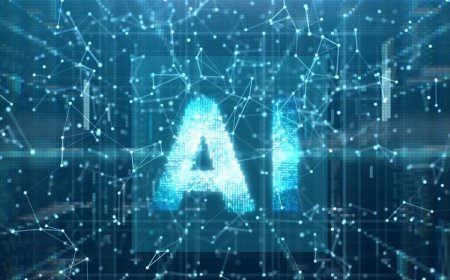The Role of AI in Disaster Management and Humanitarian Aid
Explore the vital role of AI in disaster management and humanitarian aid. Discover how artificial intelligence is transforming disaster response emergencies.

In an increasingly interconnected world, the frequency and intensity of natural and man-made disasters have prompted a growing need for innovative solutions in disaster management and humanitarian aid. Artificial Intelligence (AI) is emerging as a game-changer in this field, offering new ways to predict, respond to, and mitigate the impact of disasters. From early warning systems to resource allocation, AI is transforming the way we approach disaster management and deliver humanitarian assistance.
Early Warning Systems
AI plays a pivotal role in enhancing early detection capabilities by analyzing vast datasets in real-time. Machine learning algorithms can sift through historical data, sensor readings, and weather patterns to identify anomalies and potential disaster triggers. This proactive approach enables timely alerts and minimizes the element of surprise in disaster scenarios.
Predictive modeling and risk assessment, powered by AI, are indispensable tools for disaster preparedness. By leveraging historical data and continuously updated information, AI algorithms can calculate the likelihood of disasters and their potential impact. These insights empower authorities to allocate resources more efficiently and prioritize areas at greater risk, thus improving the overall effectiveness of disaster management and response efforts.
Rapid Response
AI-powered drones and robots for search and rescue:
AI-driven drones and robots have revolutionized search and rescue efforts in disaster scenarios. These autonomous or remotely operated machines can navigate challenging terrain and hazardous environments, increasing the speed and efficiency of locating and rescuing survivors. Equipped with sensors and AI algorithms, they can detect signs of life, assess structural damage, and relay crucial information to human responders, saving valuable time and lives.
Efficient resource allocation using AI algorithms:
AI plays a pivotal role in optimizing the allocation of vital resources during disasters. Through data analysis and predictive modeling, AI algorithms help decision-makers distribute personnel, medical supplies, and equipment where they are needed most. This smart resource allocation minimizes response time, reduces waste, and ensures that aid reaches the areas with the greatest urgency, ultimately enhancing the effectiveness of humanitarian efforts.
Data Analysis and Decision Support
Data Analytics for Damage Assessment:
In disaster management and humanitarian aid, data analytics plays a vital role in assessing the extent of damage caused by natural or man-made disasters. AI-driven data analysis tools can process large volumes of information from various sources, such as satellite imagery, sensors, and social media, to create detailed damage assessments. These assessments help organizations and authorities prioritize their response efforts by identifying the areas most in need of immediate attention. Moreover, data analytics can provide real-time updates on the evolving situation, allowing for more effective resource allocation.
AI-Driven Decision Support Systems:
AI-powered decision support systems offer invaluable assistance in making critical choices during disaster response. These systems use machine learning algorithms to process data, predict future developments, and recommend optimal strategies for relief and recovery. By considering a wide range of factors, including population density, infrastructure damage, and resource availability, AI-driven decision support systems empower disaster response teams to make informed and efficient decisions. This not only saves lives but also helps maximize the impact of humanitarian aid efforts, ultimately improving the outcomes for affected communities.
Communication and Coordination
In the realm of disaster management and humanitarian aid, effective communication and seamless coordination are paramount. AI plays a pivotal role in this domain through two key avenues.
Firstly, AI chatbots serve as invaluable tools for information dissemination. These intelligent systems can swiftly relay critical updates, safety instructions, and resource availability to affected populations. They operate around the clock, ensuring timely and accessible communication, even in the midst of chaotic situations.
Additionally, AI platforms facilitate the coordination of relief efforts. These sophisticated systems harness data analytics and machine learning to optimize the allocation of resources, such as medical supplies, shelter, and food, based on real-time needs assessments. This not only enhances the efficiency of aid delivery but also minimizes redundancy and maximizes impact.
Through the integration of AI-driven communication and coordination tools, disaster response efforts are significantly bolstered, ultimately saving lives and mitigating the impact of catastrophes.
Challenges and Ethical Considerations
Data privacy and security concerns pose significant challenges in the integration of AI in disaster management. Sensitive information collected during crises must be safeguarded against unauthorized access or breaches. Striking a balance between accessibility for aid organizations and protecting individuals' privacy is crucial.
Another critical consideration is the potential biases embedded in AI algorithms. If not carefully designed and calibrated, these algorithms may inadvertently perpetuate existing societal biases, affecting resource allocation and decision-making in disaster response efforts. Addressing bias requires ongoing vigilance and continuous refinement of AI models.
Effective human-AI collaboration is paramount in disaster response. While AI can process vast amounts of data and provide valuable insights, it should complement, not replace, human expertise and intuition. Establishing seamless communication and trust between AI systems and human responders is essential for optimizing outcomes in crisis situations. Balancing the strengths of both parties ensures a more effective and inclusive approach to disaster management.
Future Trends
Advancements in AI for disaster management
The future of AI in disaster management holds great promise. As technology evolves, AI systems will become even more sophisticated in their ability to predict and respond to disasters. Machine learning and data analysis will play pivotal roles in refining early warning systems, and AI-driven robots and drones may become even more effective in search and rescue operations. The continuous development of AI algorithms and technologies will enable disaster management to become more proactive and responsive.
International cooperation in AI-driven humanitarian aid
Collaboration on a global scale is essential for maximizing the potential of AI in humanitarian aid. Countries, organizations, and researchers will increasingly work together to share knowledge, data, and resources to improve disaster response. By fostering international cooperation, we can harness the collective power of AI to address humanitarian crises more effectively, providing timely assistance to those in need and reducing the impact of disasters worldwide.
AI plays a pivotal role in revolutionizing disaster management and humanitarian aid efforts. From early warning systems to rapid response and data-driven decision-making, its contributions are invaluable in saving lives and minimizing damages. However, to fully harness its potential, there is an urgent need for sustained research and development. This includes addressing ethical concerns, refining algorithms, and fostering international collaboration. Embracing these advancements ensures a more effective and efficient response to future disasters, ultimately safeguarding communities worldwide.


























































